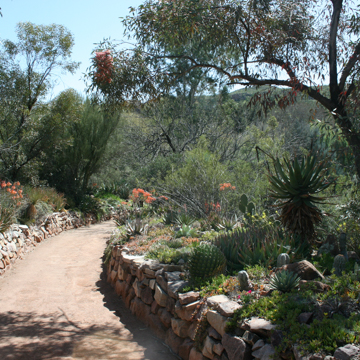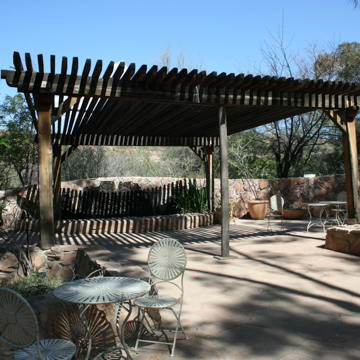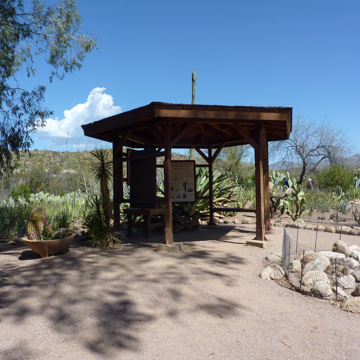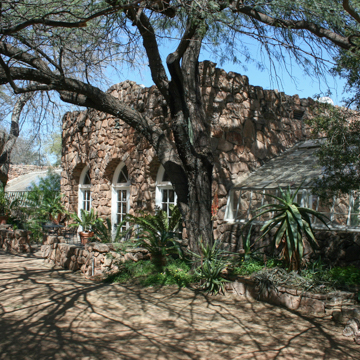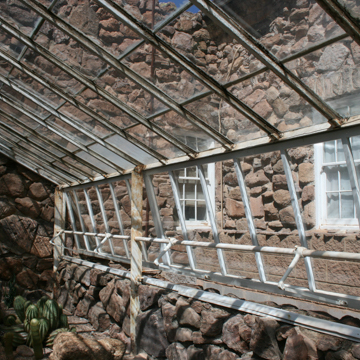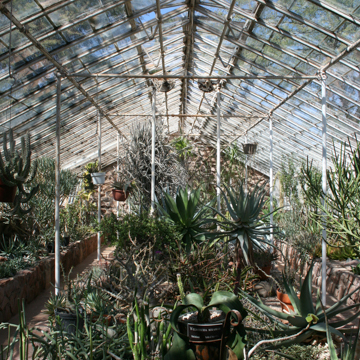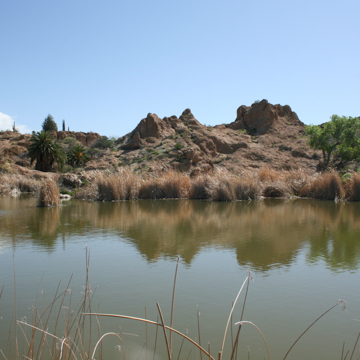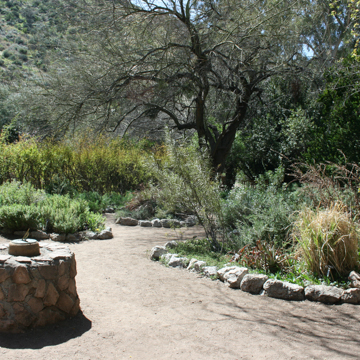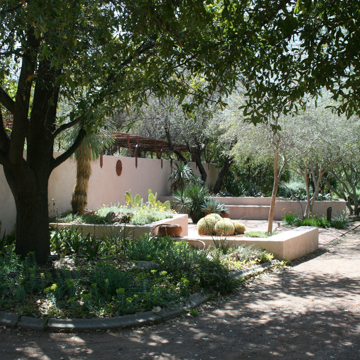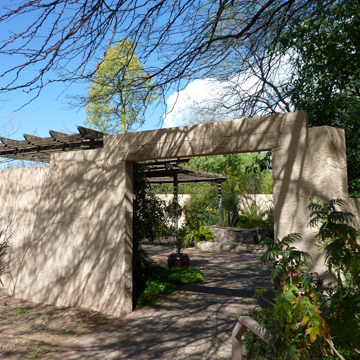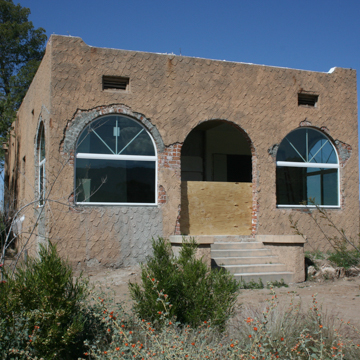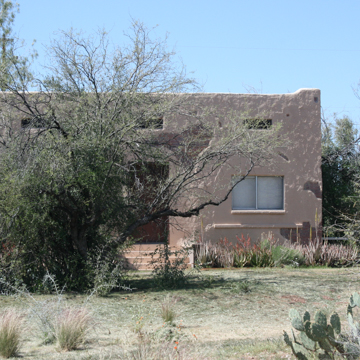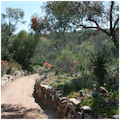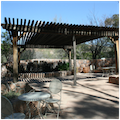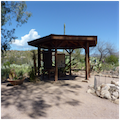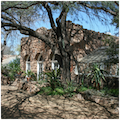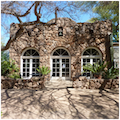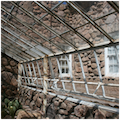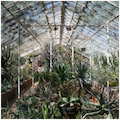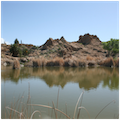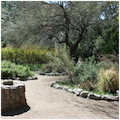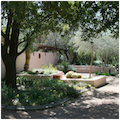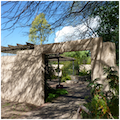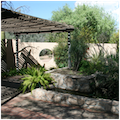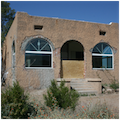You are here
Boyce Thompson Arboretum
The Boyce Thompson Arboretum is the first botanical institution in the United States dedicated to the study and development of arid plants. Founded in 1924 by copper magnate William Boyce Thompson (1869–1930), the arboretum was also the first wholly botanical institution in the intermountain region and remains Arizona’s oldest and largest such facility. The arboretum encompasses 323 acres in the foothills of the Pinal Mountains three miles west of Superior, Arizona, a microclimate that fosters Sonoran Desert vegetation. It was intended as a scientific research facility as well as a living museum for the conservation and propagation of native and non-native desert flora.
Thompson was a mining engineer who acquired the Magma Mine near Superior, Arizona, in 1910 and founded Newmont Mining Company in 1916 as his own holding company. He became interested in sub-arid flora in 1917, during a Red Cross mission to Siberia’s tundra, and hatched plans for a botanical research institute while stranded in Moscow as the Bolshevik Revolution unfolded. In 1923, Thompson obtained a permit from the United States Forest Service (USFS) to build a house near his Magma Mine in the desert town of Superior, on land that lay within Arizona’s Crook National Forest (now Tonto National Forest). Thompson later swapped land with USFS so that he could own the Queen Creek property outright. In 1924, he founded the Boyce Thompson Institute for plant research in Yonkers, New York, while laying the groundwork for a desert arboretum. That same year, Thompson hired Franklin J. Crider and Frederick Gibson, horticulturalists at the University of Arizona, to direct and oversee the southwestern arboretum. While acting as the arboretum’s first director (a position held until 1933), Crider’s work on plant materials that negate soil erosion led to the establishment of the U.S. Soil Conservation Service in 1935.
Thompson wholly planned the original 273-acre arboretum, siting the buildings, surveying the roadbeds, and choosing habitats for the first plantings. Queen Creek and its seasonal streams crisscross the park, while the rugged terrain includes steep canyon walls, gentle hills, and mesas. Initial infrastructural projects included digging an irrigation system composed of four-inch underground pipes fed by Queen Creek, a dam, and pump, as well as a 45-foot well for the dry season. Some 500 plants (including a grove of Eucalyptus trees) were planted and Ayer Lake (a 3,680,000-gallon reservoir named for Thompson’s legal advisor, Charles F. Ayer) was excavated in 1925. Permanent propagation structures were built, a natural cave on the property was readapted as a three-room storage facility, and utilitarian structures were fitted into the landscape.
By act of the state legislature in 1927, the arboretum became Arizona’s first nonprofit organization for scientific purposes. The Boyce Thompson Southwestern Arboretum (taking Thompson’s middle name to avoid confusion with other William Thompsons of the time) opened to the public on April 6, 1929. From 1933 to 1935, a crew of twenty men provided by the Civilian Conservation Corps (CCC), Pinal Mountain Camp F-16, landscaped the arboretum for visitation while working on erosion control around Superior and Globe. The CCC crew forged 2.1 miles of pedestrian paths, interspersed with shading ramadas, that link individual botanical outdoor “rooms.” These were laid so as not to disturb the mature vegetation already in place. The crew also built two palm-thatched pergolas as well as an open-air amphitheater.
Crude masonry and rustication characterize the initial architecture at the Boyce Thompson Arboretum. The Smith Building, the arboretum’s original visitor center and administration building, designed by Thompson and built by local contractor and mason Jack Davey in 1925–1926, is sited on the canyon floor. The rustic edifice, composed of locally quarried rhyolite, originally featured lichen-covered interior walls and flagstone floors. The 6,500-square-foot space contained offices, laboratories, a library, a herbarium, a seed room, a photography studio, supply rooms, and a fireproof vault; a soft-water cistern filled the basement. Flanking the structure are two attached greenhouses that display indigenous and exotic cacti and succulents. Measuring 50 feet long and 20 feet wide, the prefabricated iron-frame and glazed structures were supplied by the Lord and Burnham Company of New York.
The arboretum’s early built environment also includes the brick-and-stucco Crider House and Gibson House, erected for the director and assistant in 1924, as well as the North House, built in 1929. The property inherited the two-room, stone-and-mortar Clevenger homestead (circa 1900), which has been landscaped in the canyon as an herb garden with planting beds of native and southern European culinary, medicinal, and cosmetic herbs.
For the first three decades of its existence, the Boyce Thompson Southwestern Arboretum followed national trends in botanical garden theory and design, gradually modifying from an assemblage of isolated specimen gardens to a cohesive landscape of geographic-centered ecosystems. This paradigm shift was first prompted by the 1965 partnering with the University of Arizona, at which time the research facilities were renamed the Desert Biology Station, and again in 1976, when the arboretum partnered with the Arizona State Park system. In the 1980s, a new visitor center was erected and landscape architect Warren Jones devised the Chinese-inspired demonstration garden.
Today, the arboretum includes an extensive trail system that winds through individual outdoor exhibits featuring vegetation from the Sonoran Desert, the Chihuahuan Desert, South American deserts, Australian deserts, and native flora of the Queen Creek Riparian Area, as well as ornamental gardens. Groves of broadleaf trees, conifers, and palms add verticality to the surrounding desert scrub and grasslands, while pistachio, olive, myrtle, pomegranate, Arundo, and date palms line the paths. Like most arboreta, the plantings at Boyce Thompson are scientifically ordered by geographic origin, use, or species, and are well-labeled for public edification. As of July 2019 the arboretum is no longer part of the state park system and is now managed by the nonprofit Boyce Thompson Southwestern Arboretum 501(c)3. Adjacent to Queen Creek is the 13-acre Wallace Desert Garden, featuring the collection of H. B. Wallace, who amassed 9,000 plants over a period of thirty years in North Scottsdale. The arboretum has been working to preserve the collection since 2014, and relocated the plants to the arboretum over the ensuing years. In 2020, the Wallace Desert Garden opened to the public.
References
Boyce Thompson Southwestern Arboretum, Inc.: Purpose, History, Dedication. Superior, AZ: Boyce Thompson Southwestern Arboretum, 1930.
Erickson, Helen, and Gina Chorover. “Historic American Landscapes Survey (HALS): Boyce Thompson Southwestern Arboretum.” Paper presented at the Arizona Historic Preservation Conference, Prescott, Arizona, June 2012.
Erickson, Helen, Gina Chorover, Rebecca Field, Allison Kennedy, and Sylvia Lee, “Boyce Thompson Arboretum,” Pinal County, Arizona. Historic American Landscape Survey, 2012. From Prints and Photographs Division, Library of Congress (HALS AZ-7).
"Wallace Desert Garden." Boyce Thompson Arboretum. Accessed April 6, 2021. https://www.btarboretum.org/.
Wilson, Marjorie, “Boyce Thompson Southwestern Arboretum,” Pinal County, Arizona. National Register of Historic Places Registration Form, 1975. National Park Service, U.S. Department of the Interior, Washington, D.C.
Writing Credits
If SAH Archipedia has been useful to you, please consider supporting it.
SAH Archipedia tells the story of the United States through its buildings, landscapes, and cities. This freely available resource empowers the public with authoritative knowledge that deepens their understanding and appreciation of the built environment. But the Society of Architectural Historians, which created SAH Archipedia with University of Virginia Press, needs your support to maintain the high-caliber research, writing, photography, cartography, editing, design, and programming that make SAH Archipedia a trusted online resource available to all who value the history of place, heritage tourism, and learning.








